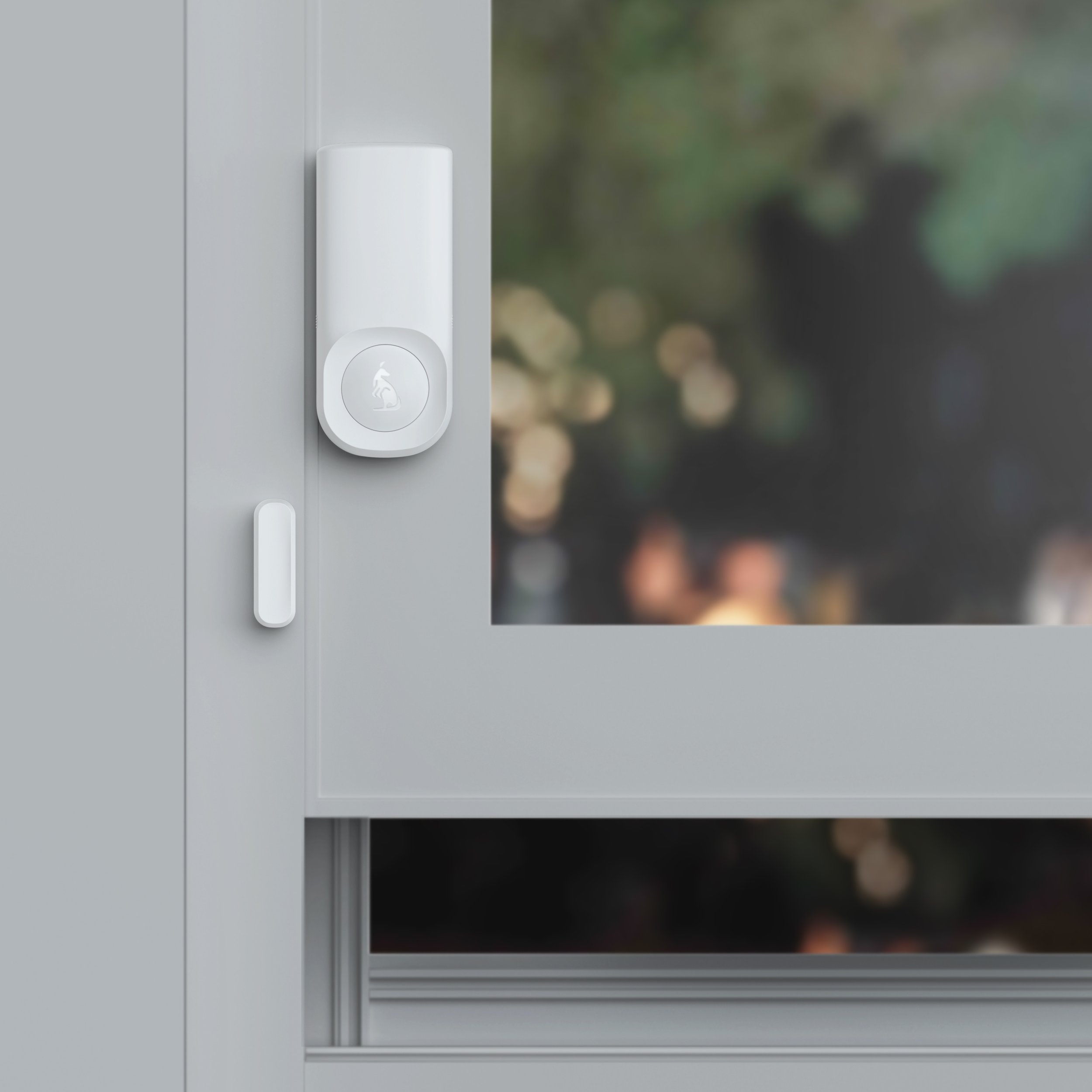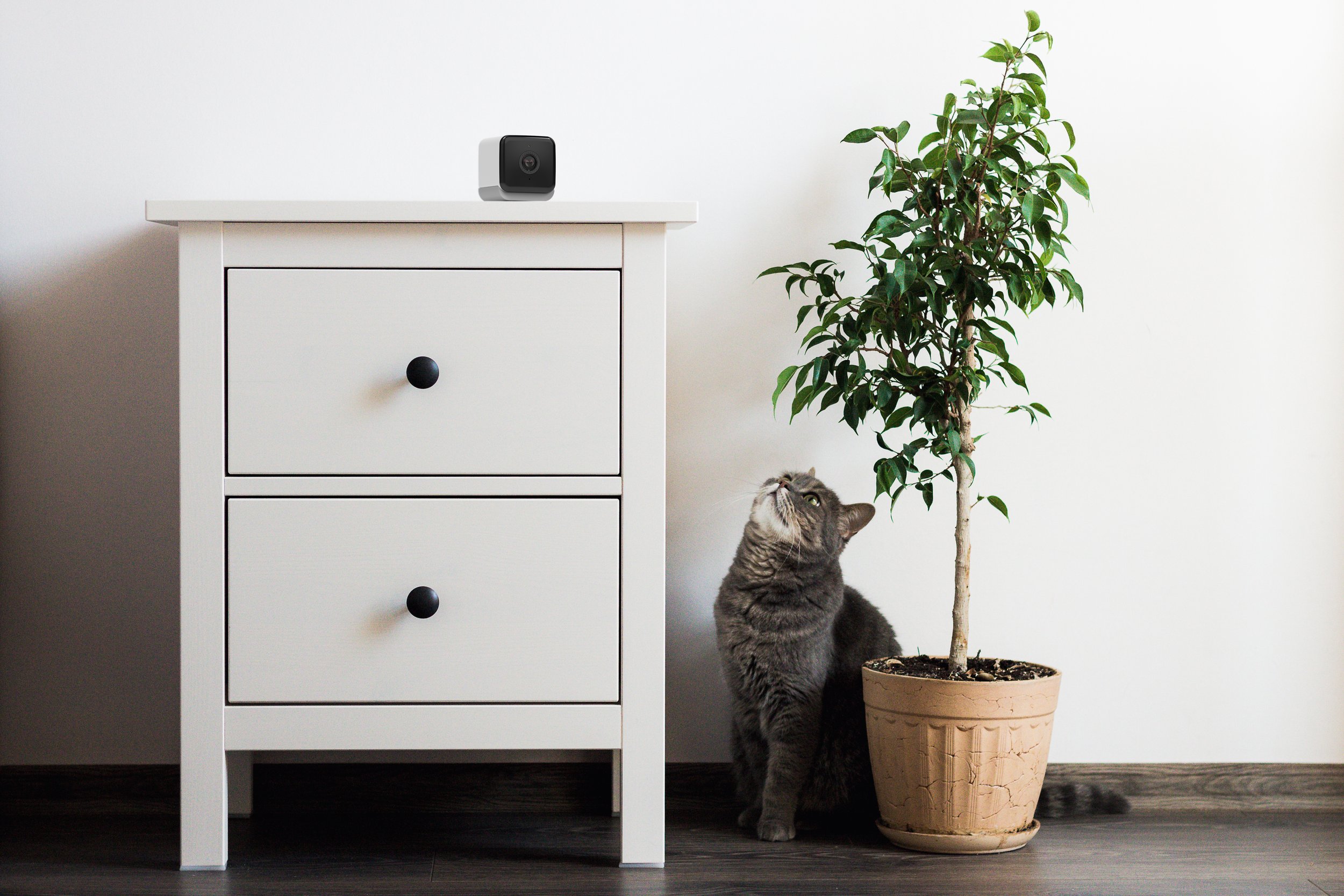Understanding Motion Detectors: the Role of Sensor Triggers
What does it take to feel truly secure in your own home? For many, it’s a combination of strong locks, smart cameras, and a reliable alarm. But one of the most critical components in that security puzzle is often the most overlooked: the motion sensor. These small devices are the unseen guardians of your space, acting as the central nervous system for your entire home security setup.
This guide will demystify motion detection. We'll explore exactly how motion sensors provide a crucial layer of protection, break down the science behind how they work, and show you how to build a smarter, more responsive security system for your home.
Takeaway
Are you making the most of motion sensors in your home security setup? Devices like the Kangaroo Indoor+Outdoor Camera leverage cutting-edge motion detection features to keep your property secure 24/7. Let’s explore how these tools work and why they’re essential for protecting your space.
What is a Motion Sensor?
A motion sensor, also known as a motion detector, is an electronic device that uses one or more technologies to detect physical movement in a specific area. When its detection field is disturbed, it sends a signal to a connected system. In a home security context, this signal is the "trigger" that can sound a siren, turn on lights, or—most importantly—start a video recording to capture what's happening.
The Role of Motion Sensors in a Complete Home Security System
A motion sensor isn't just a standalone gadget; it's a team player in a layered security strategy. Think of your home security in three layers:
Perimeter: This is your first line of defense, monitored by door and window sensors that alert you if an entry point is breached.
Exterior: This layer includes outdoor cameras and motion-activated floodlights that monitor your yard, driveway, and porches.
Interior: This is where motion sensors are essential. If an intruder manages to bypass the perimeter (for example, by breaking a window), an interior motion sensor acts as a critical backup, detecting movement inside the home and triggering the alarm.
When integrated, these devices create a powerful synergy:
Motion Sensor + Siren: The classic intruder deterrent. Movement is detected, and a loud alarm sounds, scaring off potential thieves.
Motion Sensor + Security Camera: This is the gold standard for modern security. The sensor detects movement and instantly tells the camera to start recording. This provides you with immediate visual evidence of what caused the alert.
Motion Sensor + Smart Lights: A simple but effective strategy. When motion is detected at night, connected lights can turn on automatically, startling an intruder and illuminating the area for your cameras.
Which Should You Choose?
Both! For best results, use window sensors to secure entry points and motion detectors to monitor larger spaces. Together, they create a layered security network that leaves no gaps.
How Do Motion Sensors Work?
While the effect is simple, the technology is fascinating. Most home security sensors rely on one or two key methods.
Passive Infrared (PIR) Sensors
This is the most common technology used in home security alarms. The key word is "passive"—it doesn't send out any signals. Instead, it reads the environment.
How it Works: All living things emit infrared energy, which we feel as heat. A PIR sensor is designed to detect sudden changes in this heat signature. When a person walks into the sensor's field of view, their body heat creates a rapid temperature change that the sensor identifies, triggering an alert.
Best For: Reliable and cost-effective indoor security, as they are excellent at detecting people while ignoring inanimate objects.
Microwave (MW) Sensors
Microwave sensors are an "active" technology. They work by emitting continuous, low-power microwave pulses.
How it Works: The sensor sends out signals that bounce off objects and return to a receiver. This creates a baseline map of the room. When someone moves within the area, they disturb the returning signals (a phenomenon called the Doppler effect), and this change triggers the alarm.
Best For: Larger or oddly shaped rooms where a PIR sensor might have blind spots. They can be more sensitive but are also more prone to false alarms if not configured correctly.
Dual-Technology Sensors
To provide the highest level of accuracy, many advanced security systems use dual-tech sensors that combine PIR and Microwave technology in a single unit. For an alarm to be triggered, both sensors must detect movement. This dramatically reduces false alarms, as it's highly unlikely that a gust of wind and a change in sunlight would trigger both systems at the exact same time.
Fun Fact
PIR sensors are widely used because they’re reliable and have a low false alarm rate, making them perfect for home security.
What Can Trigger a Motion Sensor?
Understanding potential triggers is key to effective placement.
Intruders: The primary target. A person moving through the detection zone is precisely what it's designed to catch.
Pets: Larger pets can emit enough heat to trigger a standard PIR sensor. This is why "pet-immune" motion detectors are essential for pet owners.
Environmental Changes: A blast of hot air from a heating vent, direct sunlight hitting the sensor, or even fast-moving shadows can sometimes cause a false trigger.
Moving Objects: Objects moved by air currents, such as balloons, hanging plants, or curtains near a drafty window, can also be culprits.
Types of Sensors: A Quick Comparison
| Sensor Type | How It Works | Best For |
|---|---|---|
| PIR Sensors / Infrared Sensors | Detect heat changes from living beings | Indoor spaces, minimal false alarms |
| Ultrasonic Sensors | Emit sound waves and measure reflections | Small indoor areas |
| Microwave Sensors | Emit microwave pulses to detect movement | Large outdoor spaces |
| Tomographic Sensors | Use radio waves to create a detection network | Warehouses, open spaces |
| Vibration Sensors | Detect physical vibrations from movement | Windows or sensitive areas |
How to Reduce Motion Sensor False Alarms
A system that cries wolf too often is an ineffective one. Minimize false alarms with these tips:
Strategic Placement: Install sensors 7-8 feet high on a wall, away from heat sources like vents, radiators, and windows that get direct sunlight.
Use Pet-Immune Models: If you have pets, invest in pet-immune sensors calibrated to ignore animals under a certain weight and size.
Leverage Camera-Based Detection: Modern security cameras use AI to distinguish between people, pets, and vehicles, offering far greater accuracy than traditional sensors alone.
Create Custom Activity Zones: A key feature in smart cameras. You can draw a box around the area you want to monitor (like a doorway) and instruct the system to ignore movement everywhere else.
Choosing the Right Sensor for Your Home Security
System Compatibility: Ensure the sensor works with your existing security system or hub. All-in-one solutions like camera-based systems remove this headache.
Indoor vs. Outdoor: Outdoor sensors must be weather-resistant and are built to handle the complexities of changing light and potential wildlife.
Video Integration: The most valuable feature. A sensor that triggers a video recording provides instant visual verification, so you know immediately if a threat is real.
Smart Features: Look for modern capabilities like person detection, customizable activity zones, and instant alerts sent to your phone.
How to Improve Sensitivity:
Place motion detectors strategically and adjust their sensitivity settings to reduce false alarms while ensuring effective detection
Motion Sensors in Modern Home Security Systems
According to a report by the Security Industry Association, about 94% of home security systems installed in the United States in recent years include motion sensors as a key component of their setup . This high percentage underscores the critical role that motion sensors play in modern home security. Source: Security Industry Association. (2023). "2023 Home Security Trends and Insights." Security Industry Association
Spotlight: Kangaroo Indoor+Outdoor Camera
The Kangaroo Indoor+Outdoor Camera stands out as a prime example of how motion sensor technology is evolving to create more effective home security solutions. Combining high-quality video, versatile motion detection, and customizable features, this camera provides a comprehensive shield against potential intruders.
Crystal-Clear Video: The camera boasts a high-definition 1080p resolution, capturing crisp, detailed footage of your property day and night. This ensures that you won't miss any crucial details in the event of an incident.
Enhanced Night Vision: Thanks to its integrated IR cut filter, the Kangaroo camera excels in low-light conditions. Even in complete darkness, you can monitor your surroundings clearly, ensuring round-the-clock security.
Precision Motion Detection: With its customizable motion detection zones, you can tailor the camera's monitoring to your specific needs. Focus on entry points like doors and windows, or monitor high-traffic areas like your driveway. By eliminating unnecessary triggers, you'll receive alerts only for genuine threats, reducing false alarms.
Multi-Sensory Awareness: The Kangaroo camera isn't just about visuals. It also features sound detection, ensuring a more holistic approach to security. If an intruder attempts to break a window or force open a door, the camera will pick up the sound and alert you.
Intuitive Motion Tagging: The camera's motion tagging feature puts a visual box around any detected movement in the video feed. This makes it remarkably easy to pinpoint the exact location and nature of the movement, saving you valuable time when reviewing footage.
Personalized Deterrence: With the ability to record up to three custom alarm sounds, you can personalize your camera's response to intruders. Choose from pre-recorded messages or record your own voice to deter potential threats and assert your authority over your property.
Frequently Asked Questions (FAQ)
-
Most modern security cameras have motion sensors built-in! They use video motion detection, often enhanced with AI, to trigger recordings and alerts. This integrated approach is often more accurate and useful than having separate, non-visual sensors.
-
Standalone alarm system motion detectors typically do not. However, the best modern security solutions integrate the motion sensor directly into the camera, like the Kangaroo Indoor+Outdoor Camera, so that detection and video recording happen in one device.
-
The terms are used interchangeably. Both refer to a device that detects movement. "Motion sensor" is more common today, especially in the context of smart home devices.
-
The earliest motion detection technology was developed in the 1950s. However, the invention of the Passive Infrared (PIR) sensor in the 1970s made them affordable and reliable enough to become a staple of home security systems worldwide.
Final Takeaway: Enhancing Home Security with Motion Sensors
Motion sensors are an essential component of any home security system, offering reliable protection against intrusions. Devices like the Kangaroo Indoor+Outdoor Camera go above and beyond, combining high-definition video, night vision, and customizable detection zones to deliver unparalleled peace of mind.
With the right combination of sensors, cameras, and strategic placement, you can create a robust home security network that keeps your family and property safe. Ready to upgrade your home security? Explore motion sensor technology today!
Related Reads:
Peace of Mind on the GO: Kangaroo - Your Compact Security Camera
Security Cameras and Theft: Seeing Clearly, Recovering Quickly
Enhancing Your Home Safety: the Role of Motion Sensors






